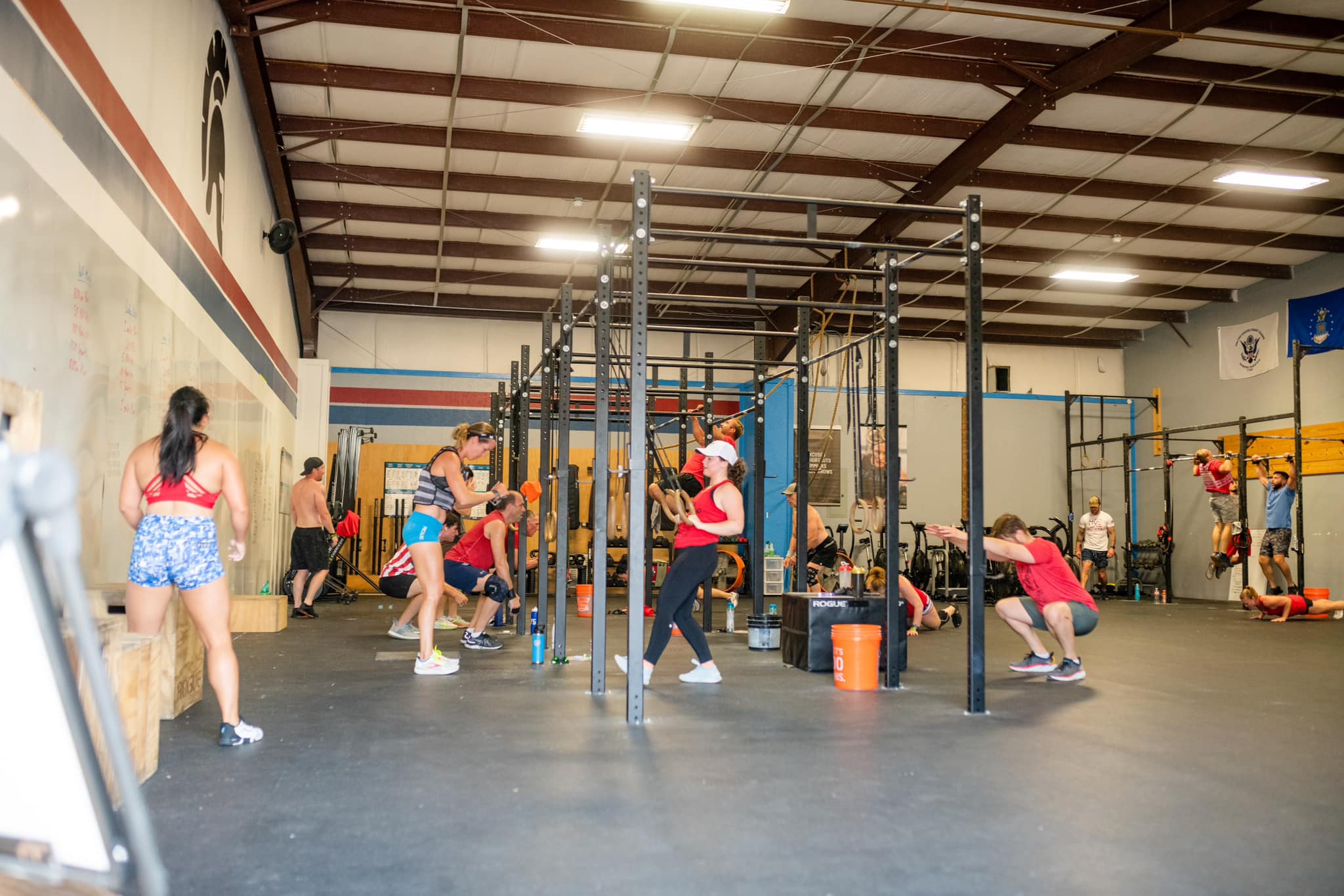Belly fat, particularly visceral fat, is located deep within the abdominal cavity and surrounds vital organs, making it more dangerous than subcutaneous fat, which is just under the skin. Many people struggle with stubborn belly fat, seeking effective and sustainable methods to achieve their fitness goals. They often crave a quick fix or a single solution that guarantees results, leading them to explore various workout regimes. CrossFit, a high-intensity workout program, has gained popularity for its rigorous approach, but some question whether it’s the key to melting away abdominal fat.
Does CrossFit help reduce belly fat?
I have to answer it depends.
Yes, because CrossFit combines high-intensity workouts and strength training, which are effective for burning calories and increasing metabolism. When paired with a proper diet, it can contribute to overall fat loss, including belly fat.
No, because there’s no way to target fat loss in specific areas like the belly. Fat reduction occurs throughout the body and depends on factors like genetics, diet, and consistency.
CrossFit can be a valuable part of your fitness plan, but achieving a leaner midsection requires a holistic approach that includes exercise, nutrition, and healthy habits.
CrossFit and Belly Fat Loss
At its core, fat loss hinges on a caloric deficit—burning more calories than you consume. CrossFit, with its varied and demanding workouts, plays a significant role in increasing calorie expenditure. The high-intensity nature of the exercises elevates your metabolic rate—the rate at which your body burns calories—both during and after your workout. This heightened metabolic rate contributes to a higher calorie burn over an extended period, facilitating the process of fat loss. Furthermore, the muscle-building aspect of CrossFit also plays a key part in fat loss, as increased muscle mass boosts your metabolic rate, making your body burn more calories even when at rest. The combination of these factors makes CrossFit a potential ally in the battle against belly fat.
Beyond calorie burning, CrossFit can also influence hormonal factors involved in fat metabolism. Hormones like growth hormone and testosterone are released during intense exercise, impacting how your body stores and utilizes fat. Research suggests that these hormonal changes are significant in aiding fat loss, although the exact impact varies from individual to individual. For you to reap the benefits, the regularity of your CrossFit workouts is key.
This emphasis on challenging your body’s limits and pushing boundaries is crucial to stimulating fat loss and muscle growth, ultimately helping you achieve your desired physique. You must approach your CrossFit training with the right approach to optimize your results.
How long does it take to reduce belly fat with CrossFit?
Generally, many individuals begin to see noticeable changes in their body composition within two to four weeks of consistent CrossFit training. The time it takes to reduce belly fat through CrossFit can vary significantly from person to person, depending on several factors such as starting weight, diet, exercise consistency, and individual metabolism.
Research indicates that a structured CrossFit program can lead to substantial fat loss over a period of about 10 weeks, with some studies showing an average decrease in body fat of approximately 15.5% during this timeframe. Participants who engage in CrossFit regularly (around four to five times a week) often report improvements not only in overall fitness but also in specific areas like belly fat reduction.
Effective CrossFit Strategies for Fat Loss
To effectively utilize CrossFit for fat loss, you need a strategic approach that involves continuous variation in your workouts. Varying your routines helps prevent plateaus, keeping your body challenged and preventing adaptation. This ensures that you are consistently pushing your limits and working different muscle groups, which is crucial for long-term progress and consistent fat loss. By adjusting intensity and exercises, you can continue maximizing the calorie-burning effect of CrossFit. You can tailor your routine to your current fitness level, increasing the weight or resistance as you get stronger.
Progressive overload is a critical component of effective CrossFit training for fat loss. Progressive overload entails gradually increasing the demands on your body over time. This could involve increasing the weight you lift, the intensity of your workouts, or the duration of your sessions. This gradual increase in challenge forces your body to adapt and grow stronger, leading to consistent improvement in your fitness levels and, ultimately, your fat loss journey. For sustained results, this crucial aspect must be incorporated into your strategy.
Nutrition plays an absolutely crucial role in achieving your fat loss goals, regardless of the exercise regimen you choose. Macro tracking, ensuring the right balance of protein, carbohydrates, and fats, is essential for fueling your workouts and supporting muscle growth. Proper hydration is equally important for optimal performance and metabolic function. Planning and preparing balanced meals tailored to your caloric needs is key. This is where a caloric deficit becomes paramount. By creating a healthy balance between your caloric intake and expenditure through your workouts, you’re paving the way for effective fat loss.
CrossFit vs. Other Fat Loss Methods
CrossFit’s high-intensity nature can offer a potent stimulus for fat loss, distinguishing it from traditional cardio methods that are less impactful in terms of metabolic changes. However, for you to experience the best possible results, a good plan for balanced meals and regular workouts are necessary. CrossFit often presents a more well-rounded approach compared to cardio, engaging various muscle groups and improving overall fitness. But it may not be suitable for individuals with certain medical conditions, in which case other, milder options may be more suitable.
Compared to low-intensity workouts like yoga or Pilates, CrossFit provides a more significant calorie burn and muscle-building stimulus. These other approaches focus more on flexibility, balance, and stress reduction. If you prioritize flexibility and body awareness, other approaches might serve you better. However, you’ll see better results in strength and endurance with CrossFit. You need to consider your goals and choose the exercise that aligns with them.
Combining CrossFit with different dietary approaches, such as keto or paleo, may influence your results. These dietary plans often involve restrictions on specific food groups and might require careful planning to ensure your nutritional needs are met. But this approach can be helpful in controlling blood sugar levels, improving overall health, and potentially optimizing fat loss. Again, individual needs vary greatly, so it’s recommended that you consult with a nutritionist.
CrossFit can be particularly beneficial for individuals looking for a full-body workout that combines strength training and cardiovascular activity. If you’re interested in building significant muscle mass, CrossFit can be a powerful tool in your fitness journey. For the ambitious and those with a desire to improve their physical capabilities in various aspects, CrossFit may be just the option you need.
What to Expect and Optimize Results For Your Belly?
Results from CrossFit, like any exercise program, are dependent on individual factors. Your genetics, current fitness levels, and any pre-existing health conditions all play a role in how your body responds. Results may vary, so you need to adjust and adjust regularly to find what’s right for your needs. Be prepared to adapt and to take note of what works for you.
Setting realistic goals and creating a sustainable plan for consistent progress is key. Aim for gradual improvements and don’t expect overnight transformations. It’s important to be patient and understand that progress is a journey, not a destination. You must prepare yourself for challenges.
Tracking your workouts, nutrition, and progress is essential for monitoring your progress and making informed adjustments. Use a fitness journal, apps, or other tools to document your workouts, dietary choices, and how you feel. This data will help you identify patterns, pinpoint areas that need improvement, and make necessary changes to your routine. Tracking will help you learn how your body reacts to different exercises and diets.
Addressing safety concerns, such as injury prevention and managing time constraints, is crucial. Proper warm-up and cool-down routines, focusing on technique, and listening to your body are important. You also need to find a balance between your commitments and your fitness goals. Consulting a healthcare professional or a certified personal trainer can give you personalized advice and guidance.
Conclusion
To be honest, CrossFit can be a great way to burn calories and build overall fitness, but losing belly fat isn’t just about one specific workout. It requires a combination of consistent exercise, a balanced diet, and healthy habits. CrossFit can help as part of a bigger plan, but there’s no quick fix – it takes time, effort, and a holistic approach. Let me know if you’d like personale guide to get started!








